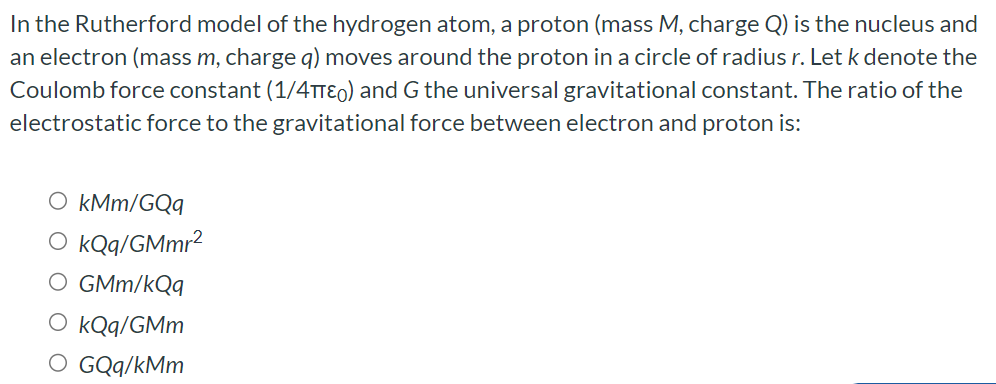In the Rutherford model of the hydrogen atom, a proton (mass M, charge Q) is the nucleus and an electron (mass m, charge q) moves around the proton in a circle of radius r. Let k denote the Coulomb force constant (1 /4πε0) and G the universal gravitational constant. The ratio of the electrostatic force to the gravitational force between electron and proton is: kMm/GQq kQq/GMmr2 GMm/kQq kQq/GMm GQq/kMm
